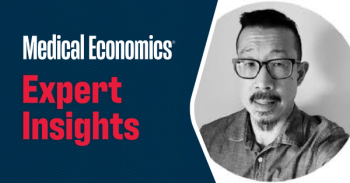
Reduce asthma-related hospital readmissions with improved preventive care, patient engagement
Improved efficiency in allergy testing and management can close a critical gap in care for patients struggling to control their symptoms.
Asthma hospitalizations account for $1.5 billion in annual hospital charges, according to the Centers for Disease Control (CDC). The CDC’s National Center for Health Statistics (NCHS) estimates that from 1997 through 2012, asthma was more common in children than adults.
Incorporating allergy diagnostics in daily practice
The current treatment guidelines, including the
Limited time, costs, and patient burdens could be some of the reasons why these evaluations were neglected, but initial constraints should not stop healthcare professionals from incorporating diagnostics techniques into their daily practice. Patients with asthma who have undergone allergy testing are significantly more likely to employ preventative strategies, such as developing an asthma action plan, practicing trigger avoidance, and improving medication adherence. A study that appeared in the
Primary care practices can utilize the following to better evaluate asthma patients:
- The Asthma Appearance, Pulse, Grimace, Activity, and Respiration (APGAR) tool, which includes a history assessment and a patient query regarding allergies and triggers, facilitates a discussion with patients about the need for further allergy evaluation. The tool is linked to a care algorithm that suggests next steps in treatment.
- The
Physician Asthma Care Education (PACE) program , an interactive training seminar that helps primary care physicians to improve their awareness of asthma and their ability to treat asthma. Assessment of the program found that it improved patient care and outcomes-specifically regarding asthma care plans, frequency of days with asthma symptoms, and ED utilization. Access to the PACE program is available to primary care clinicians and practices throughout the U.S.
- In vitro testing that assesses allergen-specific immunoglobulin E (IgE) sensitization, which can be ordered by primary care clinicians during routine visits. Skin testing, which is typically performed by an allergist, is also an option. While both tests can help accurately confirm or exclude the diagnosis of allergy triggers, according to the NAEPP’s guidelines for diagnosis and management of asthma (ERP-3), in vitro testing is an option for patients who cannot stop their medication during the testing process and for those without access to an allergist.
Improving medication adherence
When exacerbations or out-of-control symptoms are recognized, a common approach is to add more medications, which is often expensive and not necessary. Before adding medication, two issues must be explored:
1. Is the patient taking the medications?
2. Are the medications getting into the lungs? Does the patient have acceptable inhaler technique?
Nonadherence and inadequate inhaler technique are both common. Teaching, observing, and reassessing proper inhaler technique on a routine basis can enhance drug delivery and improve unintentional nonadherence, decreasing symptom and exacerbation burden. It’s important to note that while medical adherence needs to be addressed, many times that is not the only source of the problem; testing for allergen triggers and employing appropriate avoidance strategies is still often required.
Boosting patient engagement
Given the limited time for patient clinic visits in primary care settings, there’s a need to develop more efficient ways for healthcare providers to interact with patients and counsel them on how to avoid allergen exposure. Patient engagement starts with input derived from evaluation and testing. It also includes the following:
- Personalized materials. Many of the available patient materials for asthma trigger management are not culturally appropriate or available at the required reading level. They also can be lengthy and require an extremely high health literacy level to be fully understood by the average patient. Primary care practices need to assess their materials and personalize them for each patient.
- Patient education. Patient education will be difficult and unsuccessful if primary care team members are not well versed and comfortable providing evidence-based recommendations for trigger avoidance. Straightforward, concise educational modules on avoidance counseling should be available. For example, if testing reveals dust mites to be a trigger allergen, then the provider should educate the patient on what can be done to reduce his/her asthma symptoms to that trigger.
- New technologies. Apps, videos, and other technologies are emerging in healthcare. There’s still a lot of work to be done to understand how technology can improve allergen control and asthma outcomes, but the ability to monitor patient data in real-time could aid in determining the best treatment and enable a deeper level of engagement.
Conclusion
We’re seeing advancements in asthma care within primary care, but there is more work to be done. Overall, improved efficiency in allergy testing and management can close a critical gap in care for patients struggling to control their symptoms. With the appropriate strategies in place at the practice and patient level, we’ll see better outcomes, reduced emergency readmissions, and overall savings across healthcare.
Barbara P. Yawn, MD, MSc FAAFP, is a family physician researcher who currently focuses on respiratory diseases, specifically COPD screening/case finding and implementation of new tools to improve asthma outcomes. She is/was a member of the International Primary Care Respiratory Group; EPR-3 science panel, editor in chief of Respiratory Medicine Case Reviews and Chief Science Officer of the COPD Foundation. She is retired form her position as the director of research at the Olmsted Medical Center, and is an adjunct professor of family and community health at the University of Minnesota. She serves as a consultant to multiple NIH and PCORI founded studies of asthma and COPD. Dr. Yawn was chair of an Allergy and Asthma Task Force convened and supported by Thermo Fisher Scientific. More information about the task force can be found
Newsletter
Stay informed and empowered with Medical Economics enewsletter, delivering expert insights, financial strategies, practice management tips and technology trends — tailored for today’s physicians.








